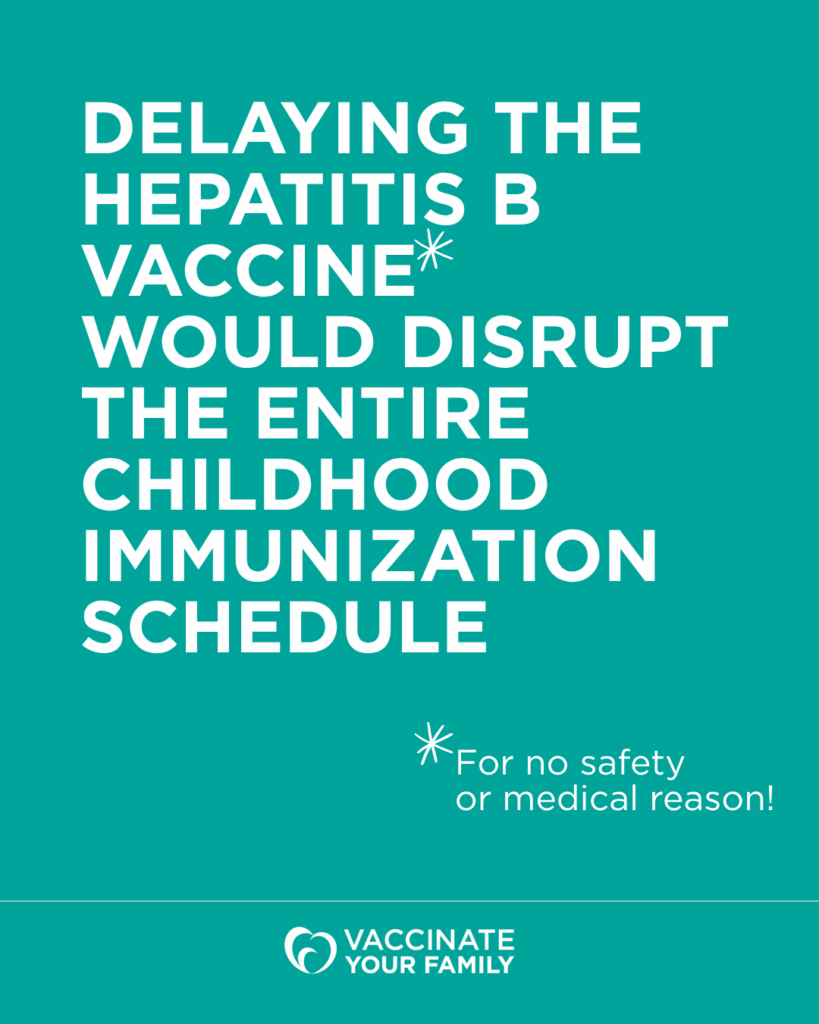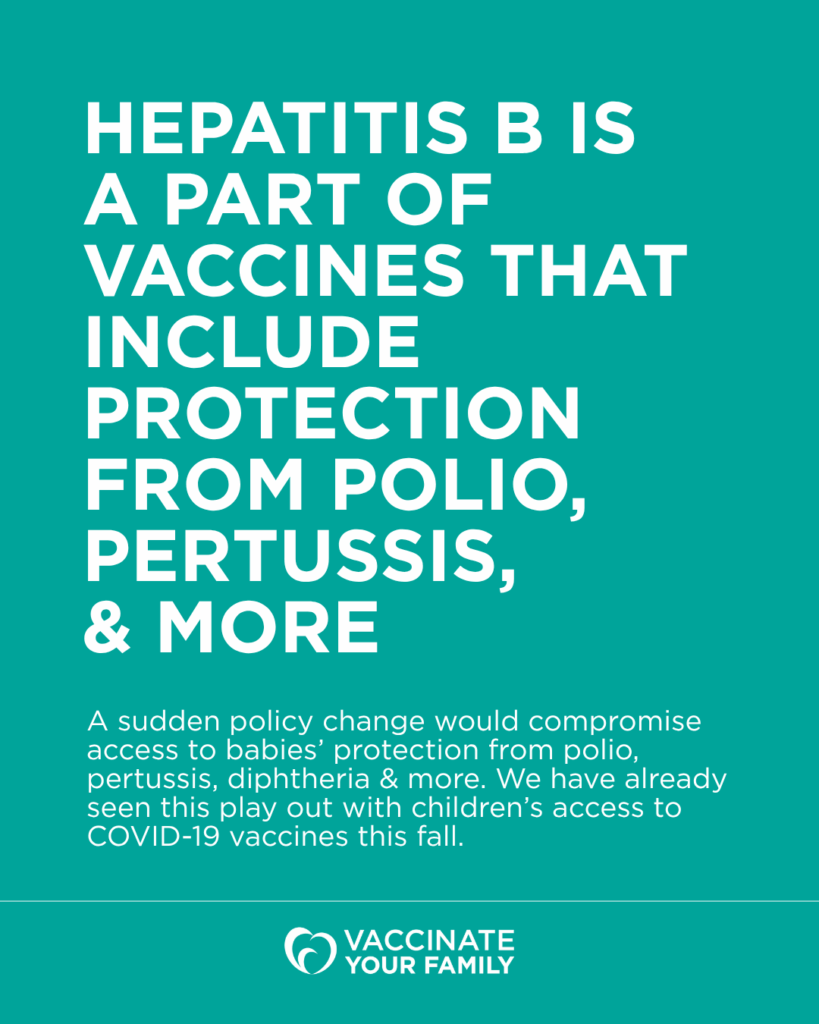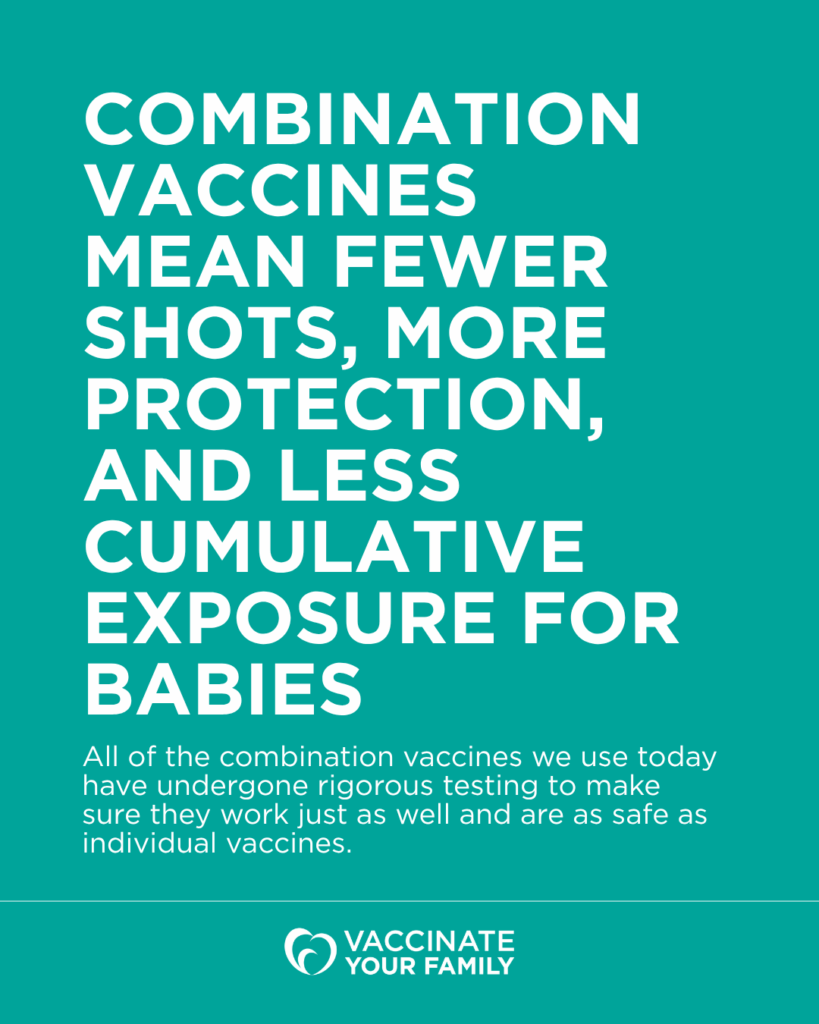Delaying the Hepatitis B Vaccine Would Disrupt the Entire Childhood Immunization Schedule
A change in the ACIP recommendation for hepatitis B vaccination could leave infants vulnerable to not just hepatitis B, but also polio, pertussis, diphtheria, haemophilus influenzae type b (Hib), and tetanus.
Why the Birth Dose Matters
The U.S. childhood immunization schedule is designed to protect infants early from serious diseases. Hepatitis B (Hep B) vaccination starts at birth for a reason: about 90% of infants infected at birth develop chronic infection, which can lead to liver cancer or death.
Before the birth dose was recommended for all infants in the United States, we tried vaccinating just those at highest risk. It didn’t work to stop many infants and children from getting hepatitis B, which is why the recommendation was expanded.
The birth dose helps prevent the virus being spread from the mother to infant during birth, but that is not the only way a baby can be exposed to Hep B. Hep B is called a silent epidemic because most people do not know that they have it. That means a child could come in contact with someone with Hep B, like a caregiver or a family member, and not know it. And, Hep B can be spread multiple ways, like contact with blood, nail clippers, or a toothbrush of someone who is infected.
Hep B vaccination effectively reduces the infant’s risk within moments of being born. Evidence from infants and families around the world demonstrate that this vaccine is effective at preventing disease and the risks to the infant are very low.
Real families are affected by hepatitis B. Learn more about Vivian’s story here.
Combination Vaccines: Fewer Shots, More Protection, Less Cumulative Exposure
Combination vaccines are safe and have been used in the U.S. since the 1940s. They combine two or more vaccines into a single shot, reducing the number of injections while offering the same strong protection against serious diseases like hepatitis B, polio, diphtheria, tetanus, pertussis, and Hib.
Benefits of combination vaccines include:
- Fewer shots: One combination vaccine can protect against up to six diseases.
- Less pain and stress: Fewer needle sticks for babies and fewer visits for families.
- Lower exposure to ingredients: Combination vaccines contain less cumulative exposure to vaccine components than if each vaccine were given separately.
- Better protection: Children are more likely to complete the full vaccine schedule on time, which means earlier and more complete protection.
Before they were approved, all the combination vaccines we use today underwent rigorous testing to ensure they work just as well and are as safe as individual vaccines. Ongoing monitoring systems continue to track any rare side effects, which are typically mild and like those of single vaccines.
Delays = More Risk, Less Access
At a recent ACIP meeting, members discussed delaying the Hep B vaccine to 1 month, and it’s been suggested that it should even be delayed to 12 years. There is no medical reason for this.
Delaying Hep B doesn’t just affect that one vaccine—it disrupts the entire childhood immunization schedule. That’s because Hep B is included in combination vaccines like Pediarix and Vaxelis, which also protect against diphtheria, tetanus, pertussis, and polio. Vaxelis also includes Hib.
Newborn babies in the fragile early weeks and months of life could be left vulnerable to extremely dangerous diseases. If there is no safety reason to delay vaccines, why would we leave infants vulnerable at a time when diseases like pertussis and measles are surging?
If ACIP changes its recommendation, it could immediately affect access to childhood vaccines that include Hep B for nearly 50% of families in the United States. We’ve already seen access issues with COVID-19 vaccines, where delays in ACIP recommendations, and therefore distribution, have left many unprotected. A similar disruption for Hep B would leave infants vulnerable to not just Hep B, but also polio, pertussis, diphtheria, Hib, and tetanus.
What This Means for Families
- Your baby could need more shots and more healthcare provider visits.
- You might lose access to vaccines your child needs.
- Your child could be at risk for serious, preventable diseases.
- Your community could face more outbreaks.
There’s no scientific or safety reason to delay Hep B. Doing so would unravel a carefully coordinated system that protects children from up to 17 diseases.
Learn more about hepatitis B and the vaccines available to prevent it here.
Please help share this important information! These social-ready graphics are downloadable. Here’s a suggested caption (or write your own!) → There’s no safety or medical reason to delay Hepatitis B vaccination OR to break up combination vaccines into separate shots. Delaying that dose could disrupt access to the combination vaccines that protect babies against polio, diphtheria, pertussis, and more. Newborns would be more vulnerable at a time when they need protection most. Combination vaccines are helpful because they mean less shots for babies and less cumulative exposure to vaccine ingredients than if the vaccines were administered separately. These vaccine ingredients are safe and well-tested, but fewer total shots with more protection can help parents rest easy.


